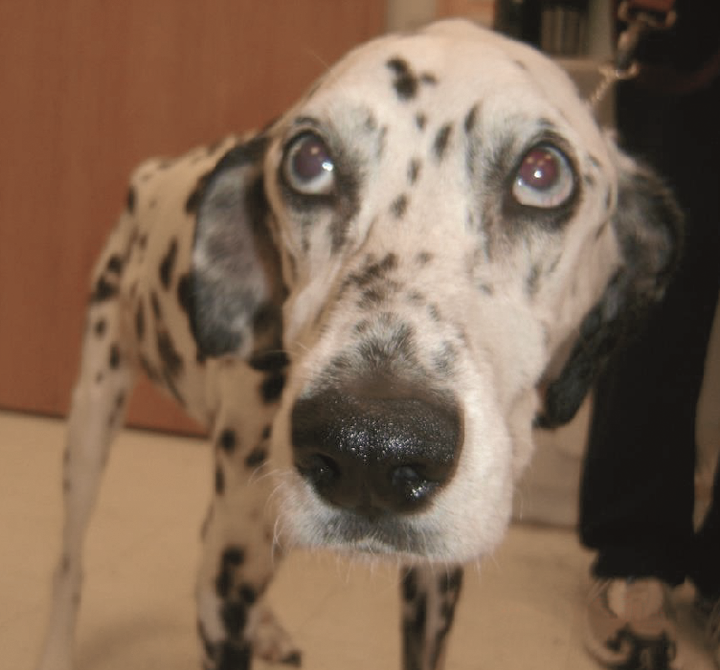Difference between revisions of "Small Animal Emergency and Critical Care Medicine: Self-Assessment Color Review, Second Edition, Q&A 20"
Jump to navigation
Jump to search
(Created page with "{{CRC Press}} {{Student tip |X = a situation requiring specific breed knowledge. }} <br><br><br> centre <...") |
|||
| (One intermediate revision by the same user not shown) | |||
| Line 28: | Line 28: | ||
[[Category:CRC Press flashcards]] | [[Category:CRC Press flashcards]] | ||
| − | To purchase the full text with your 20% discount, go to the [https://www.crcpress.com/9781482225921 CRC Press] Veterinary website | + | To purchase the full text with your 20% off discount code, go to the [https://www.crcpress.com/9781482225921 CRC Press] Veterinary website. |
| − | |||
{{#tag:imagemap|Image:Next Question CRC Press.png{{!}}center{{!}}200px | {{#tag:imagemap|Image:Next Question CRC Press.png{{!}}center{{!}}200px | ||
| − | rect 0 0 860 850 [[Small Animal Emergency and Critical Care Medicine: Self-Assessment Color Review, Second Edition, Q&A 21|Next question]] | + | rect 0 0 860 850 [[Small Animal Emergency and Critical Care Medicine: Self-Assessment Color Review, Second Edition, 2nd Edition Q&A 21|Next question]] |
desc none}} | desc none}} | ||
Revision as of 18:03, 6 November 2018
| This question was provided by CRC Press. See more case-based flashcards |

|
Student tip: This case is a situation requiring specific breed knowledge. |
A 3-year-old male neutered Dalmatian presents with a 12-hour history of lethargy, straining to urinate, and passing only small amounts of urine (186). T = 38.9°C (102°F); HR = 120 bpm; RR = panting; CRT = 2 sec; MM pink, moist; femoral pulses normal; perfusion and hydration normal. Abdominal palpation finds an enlarged urinary bladder. Rectal examination finds mild prostatic bi-lateral enlargement.
| Question | Answer | Article | |
| Name 10 structures you can palpate on rectal examination in a male dog. | Prostate, urethra, caudal aorta, sublumbar lymph nodes, rectal mucosa, fecal material, pelvic symphysis, sacral spine, anal tissue and glands, anal tone.
|
Link to Article | |
| Describe how to perform retrograde urohydropulsion to retropulse a urethral stone back into the bladder. | Heavy sedation or anesthesia and aseptic technique for urethral catheter placement. A urinary catheter is placed to the level of the urethral obstruction. The tip of the penis is manually occluded to close the urethra around the catheter. An assistant places a finger in the patient’s rectum and compresses/occludes the urethra ventrally against the pubis through the rectal wall. Sterile saline with or without sterile water-soluble lubricant is injected by syringe into the urinary catheter with sufficient force to dilate and create intraluminal pressure within the urethra distal to the obstruction. The rectal urethral occlusion pressure is quickly released by easing the rectal digital pressure, with the goal to push the stones back towards the urinary bladder. This procedure may need to be repeated to get the stone(s) into the bladder for surgical retrieval. This procedure may relieve the obstruction or permit passage of the urethral catheter past the obstruction and into the urinary bladder.
|
Link to Article | |
| What type of urinary calculi are Dalmatians predisposed to developing, and why? | Some Dalmatians have a genetic mutation that prevents the liver from converting uric acid to allantoin. The resulting high uric acid concentrations predispose these dogs to urate urinary tract calculi.
|
Link to Article | |
| Name a treatment for the following bladder stones and identify whether or not the stone type is visible on plain radiographs: (a) struvite (magnesium ammonium phosphate); (b) ammonium biurate; (c) calcium oxalate; (d) cystine; (e) silica. | Struvite stones are common in alkaline urine, primarily subsequent to urinary tract infection. Medical management (antibiotics, acidification of urine, short-term moist diet lower in protein, magnesium, and phosphates) may dissolve smaller stones that are not obstructing the urinary outflow tract. The other types of calculi cannot be dissolved medically. Surgery or lithotripsy is required to remove these stones or any stone obstructing urine outflow. Cystine and urate stones are not visible on plain radiographs nor are calculi of any composition when less than a few millimeters in size.
|
Link to Article | |
| What alternative methods are available for diagnosing stones not visible on plain radiographs? | Double-contrast retrograde cystourethrogram, ultrasound, CT, cystoscopy.
|
Link to Article | |
To purchase the full text with your 20% off discount code, go to the CRC Press Veterinary website.
